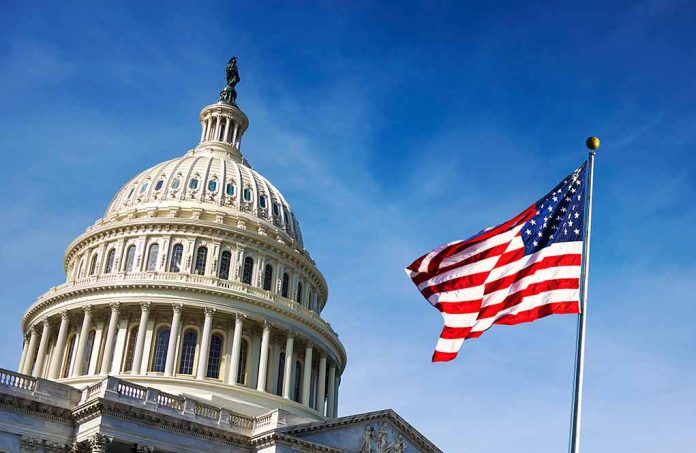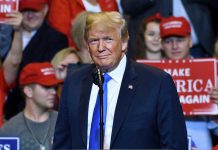
House Republicans renew efforts to uphold the American flag as the sole emblem on federal buildings, igniting debate on national symbols and unity.
Key Takeaways
- House Republicans push for the One Flag For All Act, banning non-U.S. flags on federal buildings.
- The bill, led by Rep. Diana Harshbarger, targets the display of pride flags under the Biden administration.
- Sen. Roger Marshall supports the act, aiming to prioritize the American flag as a unifying symbol.
- Exceptions include flags of the POW/MIA, state, armed forces, and visiting diplomats.
- Aligned with the Trump administration’s past policies, the bill restricts diversity-related flags.
GOP Push for Single-Flag Policy
House Republicans introduce the One Flag For All Act intending to restrict flag displays on federal properties. Created by Rep. Diana Harshbarger, the act seeks to continue the Trump administration’s policy that limits the flying of flags to the Stars and Stripes. The bill responds to current practices under President Biden, such as the pride flag display at the White House.
The move reflects a broader commitment by the GOP to uphold traditional symbols that align with national heritage. Harshbarger emphasized the act’s importance, asserting, “The Left is never going to stop at anything to do what they think is right.”
Historic Context and Support
The One Flag For All Act enjoys significant backing within GOP circles, notably from figures like Sen. Roger Marshall. The legislation garners increased viability due to the current GOP dominance in government branches. Marshall voices strong support, stating, “Never again should a flag that promotes radical gender ideology… The American flag is our nation’s symbol.”
“The Left is never going to stop at anything to do what they think is right. So if you get this codified into legislation, this bill will keep—the only thing you can fly on things like federal public buildings will be the American flag,” said Rep. Diana Harshbarger.
Exemptions within the act permit the display of certain flags, including the POW/MIA and those of visiting diplomats. These exclusions ensure that the policy emphasizes unity symbols while respecting historical and international traditions.
Political Ramifications and Critiques
This initiative links back to previous directives such as Trump’s “One Flag Policy,” mandating exclusive flying of the American flag at government facilities. The policy has drawn criticism from civil rights supporters, with opponents claiming it’s a symbolic gesture that distracts from more pressing national issues.
“The flag of the United States of America united all Americans under the universal principles of justice, liberty, and democracy. These values… are shared by all American citizens,” said Marco Rubio.
Despite resistance, advocates argue for the necessity of reinforcing national symbols that embody shared values. The One Flag For All Act represents a continuation of a broader ideological battle over representation and heritage symbolism within government domains.
Sources:
- https://www.washingtonexaminer.com/news/house/3318479/house-republicans-revive-efforts-ban-pride-flags-federal-buildings/
- https://nypost.com/2025/01/22/us-news/trump-admin-outlaws-pride-blm-flags-at-state-department-stars-and-stripes-only-report/
- https://www.newsweek.com/trump-bans-pride-blm-flags-report-2018810
- https://www.nbcnews.com/nbc-out/out-politics-and-policy/pride-flag-ban-us-embassies-government-shutdown-deal-rcna144647










